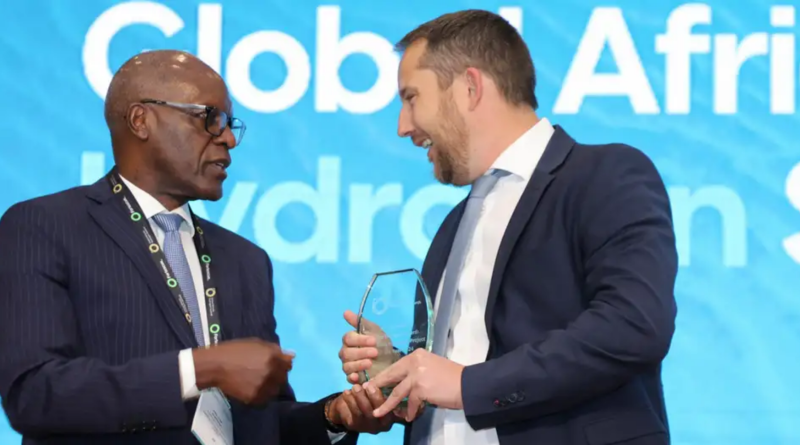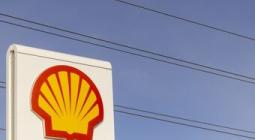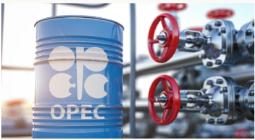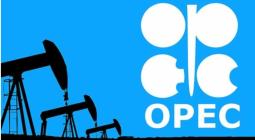Namibia's hydrogen ambitions take shape

Namibia plans to become a central hydrogen location in southern Africa. There are currently eight projects in various stages of development, three of which could start production this year. All three have received their start-up capital from Germany.
"Three years ago, people thought it was a crazy idea," said Namibian Minister of Energy and Mines, Tom Alweendo, earlier this month at a meeting in Windhoek about the progress of the country's hydrogen ambitions. "But with every milestone we reach, we can hopefully convince more people."
Emission-free iron production
For example, the HyIron project which is establishing the first industrial production of iron at net zero emissions, according to the company. Some 15,000 tons of iron are to be produced using green hydrogen by the end of 2025.
The project is being financed with €13 million ($14.4 million) from the German Economic Affairs and Climate Ministry (BMWK), among others.
The Daures Green Hydrogen Village, on the other hand, aims to produce green ammonia for the manufacture of fertilizers for the African market. Here, Germany's Ministry of Education and Research (BMBF) has contributed €12.2 million in seed capital.
A small portion of this will also go towards a research collaboration with the University of Namibia (UNAM) and the University of Stuttgart. The pilot project will initially produce 100 tons of green ammonia per year.
However, both projects currently have one thing in common: Although there is great interest in the products, no binding purchase agreements have yet been signed. So-called grey products, which refer to those produced using fossil fuels, are currently still significantly cheaper.
"We must also find ways to reduce the risk of competitiveness for those who invest in the market," said Jochen Flasbarth, the state secretary at German Federal Ministry for Economic Cooperation and Development (BMZ), who traveled to the Global African Hydrogen Summit in the Namibian capital Windhoek with his colleague Michael Kellner from the BMWK.
Investment security
One possibility for this is the German funding instrument, H2Global — a bidding competition for green hydrogen products. Companies indicate how much they would pay for the products.
The German government would then finance the gap between the highest bidder and the actual production costs.
"However, this will not be enough for the large-scale ammonia productions that are planned here, for example in Namibia," Flasbarth told DW.
He has promised a mandatory quota system to offer companies in Namibia investment security. For example, German companies could be obliged to source a fixed proportion of their requirements for certain resources from green production.
Kellner also spoke to DW about the need for purchase guarantees in order to be able to scale up projects. HyIron, for example, hopes to be able to make a decision to increase production to 200,000 tons of iron per year as early as next year.
"There are no upper limits," HyIron managing director Johannes Michels told DW.
The larger the project, the less reliant the company is on aid instruments from customer countries such as Germany.
"Our goal is to become completely competitive in the medium term," added Michels.
Daures also has plans for a gradual expansion of production: The company is aiming for 1 million tons of ammonia per year by 2032.
The German government agrees that Namibia should become a central building block in the decarbonization of Western economies. BMWK State Secretary Kellner sees profit opportunities on both sides.
Namibia's hydrogen ambitions gain momentum
In concrete terms, this means that Germany gets green hydrogen and its derivative — and Namibia gets jobs and added value. This has met with approval from the Namibian government.
"Namibia is open to business relationships that have a significant impact on our development and at the same time benefit investors," Namibian Vice President Netumbo Nandi-Ndaitwah declared at the start of the hydrogen summit in Windhoek.
Kellner, meanwhile, denies that the export of green hydrogen products from Namibia could take on neo-colonialist traits.
"What is working well are refined products, and of course that also creates added value here, which is why it is not colonial, but a partnership of equals," Kellner told DW.
And there is still money from Germany and Europe. The German State Secretaries Flasbarth and Kellner, as well as the current EU Commissioner for Energy, Kadri Simson, signed further grant agreements for Namibia together with colleagues from the Netherlands and Belgium at this week's hydrogen summit.
Significant financial support for hydrogen projects
A total of €36.9 million will flow into unspecified projects for the development of hydrogen infrastructure, the implementation of social and environmental studies, and the strengthening of the regulatory framework in Namibia.
Energy and Mining Minister Tom Alweendo expressed his gratitude to the European partners at the conclusion of the agreement.
"I can only appeal to you: Let us ensure that we work diligently so that these programs that lie ahead of us benefit the Namibian people," he urged.





